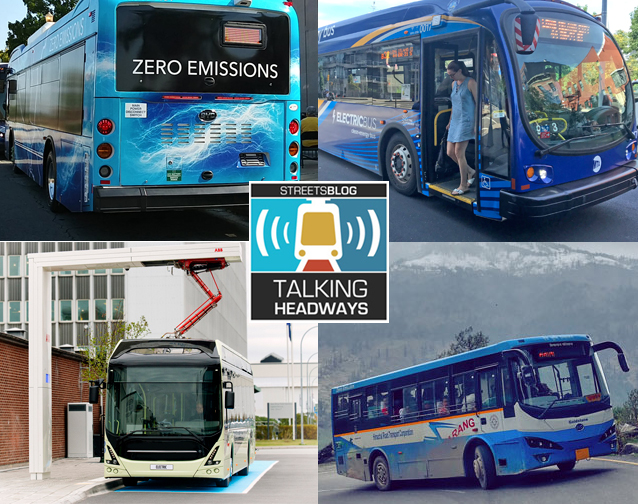This week, we’re joined by Erica Eggleton, a PhD candidate at the University of Washington, to chat about her work on Route Dynamics, an open source program that estimates the energy demand for electric bus routes run by King County Metro. We talk about how her program will be useful to transit agencies seeking to electrify.
For those of you who prefer to read than listen, an excerpted transcript is below the audio player. If you want the full unedited transcript (and can put up with some typos), click here. It's worth it.
Jeff Wood: What are some of the things we need to think about in terms of the transition to electric buses?
Erica Eggleton: The key is implementing data driven approaches. So this software we’ve developed is called Route Dynamics. And the goal of this software is to create a clear pathway for transit agencies that are making these electrification shifts and understanding what characteristics of routes and vehicle specifications are important to get the most out of your batteries and infrastructure planning.
Agencies can be considering things like the geographic location of the route, how hilly the routes are, how the ridership of the routes change, how full the buses are, how much acceleration is needed, how fast you’re stopping and starting, where like bus stop locations are, etc. So, yeah, we're essentially taking those type of things that might be important for logistics management in general for the transit agencies, but they’re also valuable for considering what you need for your battery electric buses as well. So trying to merge those together.
Jeff Wood: You just mentioned a number of things that are integrated into the tool, but I’m wondering where did the idea for the tool came from and how it was developed and what is included?
Erica Eggleton: So the idea came from this motivation of trying to get more information without only relying on like onboard vehicle data. And we were also reading more about like what type of open source data is available. And then in the literature, we found models such as vehicle dynamics models that essentially are considering all the forces acting on the bus and then estimating the power requirements. So essentially what the software entails is you take in this data and you get power and energy requirements out that you can use to analyze your different routes.
Jeff Wood: And you use mapping tools too, you use GIS to calculate some of that stuff. It sounded like some of the processing was pretty intense as well.
Erica Eggleton: Yeah. Great point. So to revisit some of the different data first that goes into it, it’s the geographic information systems or GIS data. That’s essentially the location of where the bus route is, and also its elevation. So with that, you can determine the elevation profile for the route and determine how steep it is and stuff like that. But yeah, you’re right. It was a little hard to figure that point out because it needed to be filtered a certain amount. So that way we can get accurate estimates. So part of the software itself, one part is just to even clean that data to give us smooth elevation profile. So that’s one of the inputs that we can use.






